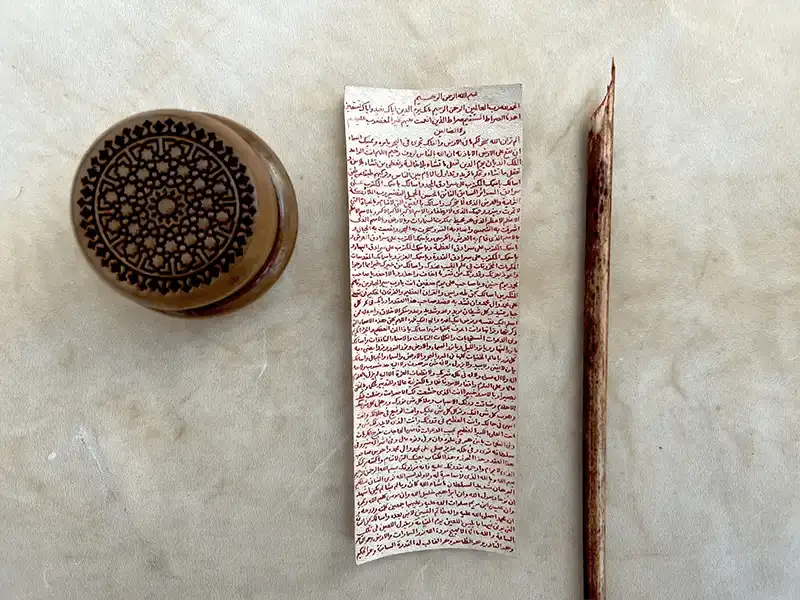The Story of Hirz Imam Jawad
The Hirz of Imam Jawad has two versions, commonly known as the shorter hirz (hirz saghir) and the longer hirz (hirz kabir). In Arabic, saghir means small or little, while kabir means big, large, or great. In the context of talismans and amulets, saghir refers to a shorter or smaller version, and kabir refers to a longer or larger one.
Let’s explore both versions.
First, it’s important to understand the differences between these two sacred amulets (hirz) or prayers (dua). Both were transmitted from Imam Jawad (a.s.) and are revered for their blessings and benefits.
The shorter hirz (hirz saghir) consists of about two lines and is included in Mafatih al-Jinan, a well-known book of Islamic prayers and duas. Anyone can refer to this hirz, write it down, and carry it for protection. Unlike the shorter hirz, the longer hirz (hirz kabir) spans more than two pages and has specific rituals associated with it, such as writing it on deer skin and other specific practices.

The Supplication from the Hirz of Imam Jawad (a.s.):
یا نور یا برهان یا مبین. یا منیر یا رب اکفنی السرور و افات الدهور و اسئلک النجاه یوم ینفخ فی الصور
“O Light, O Clear Evidence, O Manifest. O Illuminating Lord, protect me from the evils and afflictions of time. I ask You for deliverance on the day when the trumpet is blown.”
It was narrated from Imam Jawad (a.s.) that he said, “Protect yourself with this prayer.”
He continued, “If you encounter the armies of Rome and the Turks, and even if all the people of the earth unite against you, with this amulet, no harm will come to you, and you will be safe from all of them.”
The Story of the Hirz of Imam Jawad (a.s.)
Imam Jawad married the daughter of the Caliph Ma’mun, a woman who often troubled him. One day, Umm ‘Isa became very upset and complained to her father, Ma’mun, about Imam Jawad’s marriage. Enraged, Ma’mun went to Imam Jawad’s house with a sword and attacked him.
Umm ‘Isa, realizing the gravity of the situation, began to cry and expressed deep regret, saying, “You have killed the grandson of the Prophet.” Overcome with sorrow, she lamented, “We have brought eternal disgrace to our family.” They even ordered preparations for Imam Jawad’s funeral.
However, a servant soon arrived and said, “I have just been with Imam Jawad.” To their astonishment, they found that Imam Jawad was unharmed.
Yasir asked Imam Jawad, “Please give me the garment you are wearing so I can keep it as my shroud.”
When Imam Jawad removed the garment, there were no signs of wounds on his body. He explained, “I have an amulet with me.” He added, “Don’t you know that I have a protector that shields me?” (referring to the hirz).
اما علم ان لی ناصرا و حاجزا یحجز بینی و بینه؟
The narration continues with Imam Jawad instructing Yasir to bring deer skin (for the protective prayer to be written on). He instructs that a piece of silver should be prepared, on which the prayer should be engraved (a silver plate).
He further directed that in times of hardship, the hirz should be tied to the right arm, and then he explains the method for reciting the prayer and provides the prayer’s specific wording.




No comment